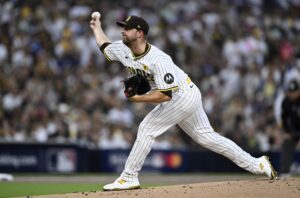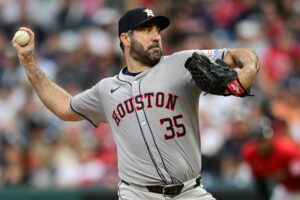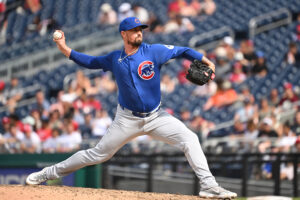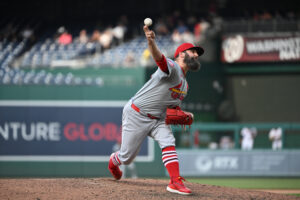The Milwaukee Brewers have admitted to being a rebuilding team the past couple years. The actual rebuild probably dates back before that. But every rebuild has two phases: the tear down, and the build back up. Though it’s opposite sides of the same coin, it’s tough to determine which side the Brewers are facing. Ryan Braun will undoubtedly (continue to) be subject to trade talks from now until he either is dealt or his contract expires. Whether he’s dealt or not, whether the Brewers win total improves or not, this year is all about landing on the right side of their rebuilding project. Ideally, they need to start building back up.
2017 Milwaukee Brewers Season Preview
This might be the first year of “build it back up.” Here, in the 2017 Milwaukee Brewers season preview. We’ll look at why the subtle shift in the rebuilding phase is hugely important to the future success of the club.
The Outfield
No place on the field is more symbolic of where the Milwaukee Brewers are as a franchise than the outfield. Braun (and his contract) is the only holdover from the 2011 team that reached the NLCS. Unless you count Craig Counsell, who was a utility man on that team and is now Milwaukee’s manager. The Brewers have an infusion of young talent in the outfield, but one less spot to play them because of Braun (and his contract). Veteran Kirk Nieuwenhuis is there as well, but he’s destined for a reserve role. If he can even make the team out of spring camp.
Shedding Braun is the last shoe to drop in the rebuilding effort. But he still draws fans. And the effect he has on attendance cannot be understated. Especially for such a small-market team that still manages to draw decent-to-good crowds relative to expectations, even while in a franchise slump. Getting value back in a trade might be difficult, since Braun’s value dips into the intangibles.
Of the youngsters, Domingo Santana and Keon Broxton are the two to watch. Santana played pretty well last year, hitting .256 with 11 homers and a .345 OBP in 281 plate appearances. He was the prize of the Carlos Gomez trade. Now 24, he’ll be given every chance to prove himself. And has to show that he can be relied on going forward. Same goes for Broxton, although his leash is a bit longer. Broxton looks to be the everyday starter in center. After he burst onto the scene last season. He hit .242, but more importantly, had a .353 OBP and netted 23 stolen bases. Broxton also showed enough to give Brewers fans hope that he can develop into the kind of defensive wizard that Gomez was.
Who Are the Building Blocks?
Aside from the the outfielders, the Brewers have a couple players they see as cornerstones when they envision rounding into a serious contender. Shortstop Orlando Arcia has been the Brewers top prospect for years. He got his first serious taste of the Majors last year, getting 219 plate appearances. Arcia’s defense looked MLB ready from the get-go, but he was a liability at the plate, hitting only .219 with a .273 OBP. At bare minimum, Arcia’s development will directly correlate to the Brewers season being a success or not. Regardless of where they end up in the standings.
Arcia is arguably the most important element of the Brewers grand plan. Given the position he plays with the combination of resources and transactions the Brewers have made to make his development go as smoothly as possible.
Last season, Jonathan Villar was one of the two biggest surprises for Milwaukee. But the Brewers recently floated a contract extension Villar’s way and he promptly rejected it. That may not be the negative it seems. But keeping Villar next to Arcia for the long term needs to be a priority for the Brewers. As long as Villar continues to build on last season. Villar was the stopgap at short last year while the club waited to bring up Arcia, but Villar’s performance (.285 BA, .369 OBP, 19 HRs, and a league-leading 62 steals) made him indispensable. He slots in as the starting second baseman now that he gave way to Arcia, and can also play third.
The (Starting) Pitchers
The other huge surprise in Milwaukee last year was Junior Guerra. Last season, at the end of July, Guerra sported a sparkling 7-2 record and a 2.70 ERA. He only made four starts the last two months of the season, and was pretty pedestrian in them. Although he still finished 9-3 with a 2.81 ERA.
There’s one big issue with Guerra, however. For his career, he’s only pitched in 23 MLB games, yet is entering his age-32 season. 32! So there’s a ton of ways Guerra’s future could go. His 2016 season could prove to be a great performance in small sample size theater. Or he could continue his ascension from obscurity. Either way, his age and shocking numbers offer an interesting conundrum for a rebuilding team looking for all the young help they can get. Which do the Brewers prioritize more: age/youth or help? If it’s the former, the Brewers will trade Guerra.
Milwaukee has a number of intriguing starters (aside from Guerra). Although almost all of them project as solid third starters. Rather than ace-level potential. Wily Peralta has bounced all over the performance spectrum. In 2014, flirted with inclusion in the Cy Young Award conversation. Last year he was borderline unplayable (even on the wrong side of that at points). The jagged pill on the pitchers side for Milwaukee is swallowing $12.5 million this year and $13 million next season for Matt Garza. Unless there’s a chance the San Francisco Giants have $25.5 million worth of leftover Jeff Kent jerseys they’d trade for a chance to refurbish Garza or something, Garza’s contract is a black hole.
For the Milwaukee Brewers, this season isn’t so much about this season, if that makes sense. Rather, it’s about finding out who is going to contribute beyond this season.
Main Photo






